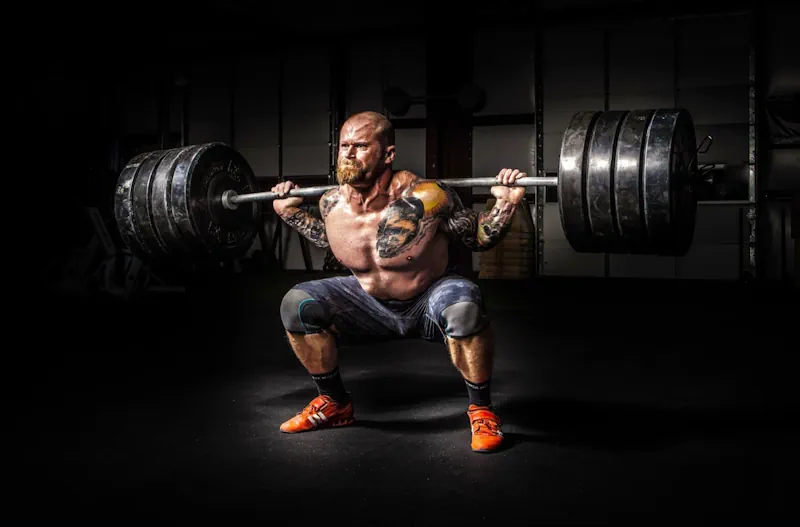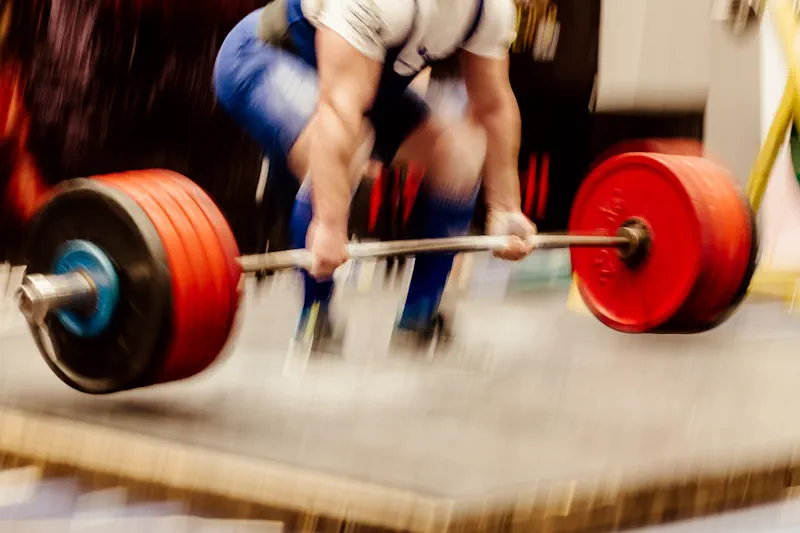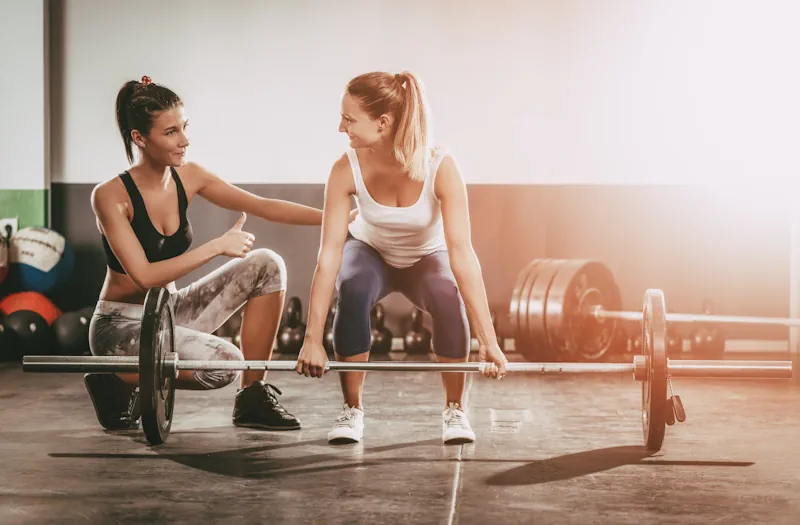Sheiko Programs Review

""
What's In This Article
- Key Takeaways
- Introduction
- Program Overview
- Key Components of the Program
- Program Schedule
- Volume and Intensity
- Example of the Program
- Strengths of the Program
- Potential Drawbacks
- Coaching Tips
- Wrap-Up
- FAQs about Sheiko Powerlifting Programs
Key Takeaways
- Sheiko programs focus on skill and strength: These routines are built around improving your squat, bench press, and deadlift with a big emphasis on doing these lifts right.
- Designed for all levels: Whether you're just starting out in powerlifting or aiming to top the charts at competitions, a Sheiko program fits your stage.
- Commitment is key: To see results, you must be ready to put in the time and stick to the program. It's all about long-term gains rather than quick fixes.
- Customization for personal needs: Adjusting the program to fit your recovery ability and personal goals is crucial for getting the most out of it without risking your health.
- Proven success: The success of athletes who have followed Sheiko's programs is a testament to the effectiveness of this structured and disciplined approach to powerlifting training.
Introduction
The Sheiko programs are a series of powerlifting training routines designed by Boris Sheiko, a renowned coach in strength sports. Sheiko's coaching achievements are notable in the European Powerlifting Federation, guiding many lifters to success at world championships. What sets the Sheiko programs apart is their detailed approach to powerlifting training, focusing on bench press, squat, and deadlift. These programs are tailored to lifters at various levels, from beginners to advanced competitors, and are known for their structured training cycles that emphasize technique, volume, and intensity. The Sheiko programs have proven incredibly successful, helping many powerlifters increase their strength significantly and perform better in competitions. This introduction will dive into the specifics of these programs, highlighting their unique components and why they're a popular choice among powerlifters worldwide.

Program Overview
The Sheiko powerlifting programs are comprehensive training plans that prioritise precision, control, and gradual improvement in the three main lifts: the squat, bench press, and deadlift. Boris Sheiko designed these programs, reflecting his extensive experience and success in coaching powerlifters to achieve top results in international competitions, including the European Powerlifting Federation and world championships.
A key goal of Sheiko's programs is to build strength steadily while minimizing the risk of injury. This is achieved through a meticulously planned training cycle that focuses on managing volume and intensity over time. The programs are suitable for a wide range of lifters, categorized into levels such as beginner, intermediate, and advanced trainees, making them accessible to anyone passionate about powerlifting.
Typically, a Sheiko program lasts anywhere from several weeks to months and is divided into various blocks, such as the accumulation, transmutation, and realization (or peaking) phases. Each phase has a specific purpose, from building a solid foundation of strength to preparing lifters for competition day. The daily routine involves multiple weekly sessions, each focusing on different aspects of the lifts or supporting exercises.
The Sheiko programs offer a structured path toward improving powerlifting performance, emphasizing technique, consistency, and strategic progression in training. This approach has proven effective for many lifters, from those just starting in the sport to seasoned athletes looking to refine their skills and push their limits in powerlifting competitions.

Key Components of the Program
The Sheiko powerlifting programs are distinguished by several key components contributing to their effectiveness and popularity among strength athletes. Understanding these elements is crucial for anyone considering Sheiko's methodologies for their training regimen.
Exercises Included
The main lifts are at the core of the Sheiko programs: squat, bench press, and deadlift. These are complemented by various accessory exercises designed to improve technique, build muscle, and prevent injury. Unique to Sheiko's approach is the inclusion of variations of the competition lifts, such as paused squats or deadlifts off blocks, which target specific phases of the lift to develop strength and technique. Additionally, exercises like good mornings and bicep curls are incorporated into the workout to enhance overall strength and stability.
Program Schedule
The Sheiko programs are characterized by a high volume of training spread across multiple sessions each week. Typically, athletes will train four to five days a week, with each day focusing on different combinations of the main lifts and accessory work. The structure is cyclical, often repeating exercises with varying intensities to ensure progressive overload and continuous improvement.
Volume and Intensity
A hallmark of Sheiko's training philosophy is the careful modulation of volume and intensity. The programs often feature a high total volume of work, achieved through numerous sets of the main lifts at submaximal intensities. This approach allows for significant practice of the lifting techniques without overloading the athlete, promoting gradual strength gains and minimizing the risk of overtraining. Intensity and volume are meticulously planned to vary across different phases of the training cycle, ensuring that lifters build up to their peak performance for competitions.
Training Load and Effort Levels
Sheiko's programs make strategic use of different loads and effort levels to optimize strength development and recovery. The training cycles include periods where lifters handle heavier weights closer to their one-rep max (1RM), while lighter weights are interspersed in lighter sessions to facilitate recovery. This methodical variation helps balance pushing the athlete's limits and allowing adequate rest and adaptation.
These components—focused exercise selection, a structured schedule, and nuanced volume and intensity management—combine to form the backbone of the Sheiko powerlifting programs. This framework supports lifters in achieving substantial strength gains while fostering a deep understanding of their technique and capabilities in the squat, bench press, and deadlift.

Program Schedule
The program schedule within Sheiko powerlifting programs is carefully structured to optimize strength gains and enhance lifting technique over time. This approach is built on a foundation of frequency, allowing athletes to train multiple times a week, focusing on the main lifts—squat, bench press, and deadlift—and their variations.
Weekly Training Plan
Athletes following Sheiko programs typically engage in four to five training sessions per week. Each session is designed with a specific focus, alternating between the main lifts and incorporating a balanced mix of accessory work. The distribution of exercises ensures that each muscle group receives adequate attention and recovery time.
Phases or Cycles
Sheiko's training is divided into distinct phases, each with a particular focus:
- Accumulation Block: This initial phase is characterized by higher volume with moderate intensity. The aim is to build muscle and foundational strength, preparing the athlete for heavier loads in subsequent phases.
- Transmutation Block: In this phase, the volume decreases while intensity increases. The focus shifts towards converting the accumulated strength into powerlifting-specific performance improvements.
- Realization (Peaking) Block: Leading up to a competition, the volume further decreases, and intensity peaks. This phase prepares athletes to perform at their maximum potential on competition day.
Adjustments Over Time
Throughout the program, adjustments are made to volume and intensity based on the athlete's progress and the proximity to competition. This ensures that the lifter is continuously improving without overreaching or encountering burnout. The cyclical nature of the program allows for repeated exposure to the core lifts, promoting technical proficiency and neuromuscular adaptation.

Volume and Intensity
In Sheiko powerlifting programs, the concepts of volume and intensity are crucial elements that drive progress and adaptation in athletes. These programs employ a strategic approach to managing these variables, ensuring lifters improve their strength and performance while minimizing the risk of injury.
Training Load and Effort Levels
Sheiko programs are known for their systematic manipulation of training load, characterized by a detailed balance between the amount of weight lifted (intensity) and the total number of reps and sets (volume). The philosophy behind this approach is to expose the athlete to a high volume of work at submaximal intensities. This method allows lifters to frequently practice the main lifts' technical aspects without overstressing the body.
Changes Over Time
As an athlete progresses through a Sheiko training cycle, there are deliberate adjustments in both volume and intensity:
- Early Phases: In the initial stages of the program, the emphasis is on higher volume with moderate intensity. This focus on accumulating work helps to build muscle endurance and technique while preparing the body for the stress of heavier weights.
- Mid to Late Phases: As the program advances, volume gradually decreases as intensity increases. This shift allows lifters to handle heavier weights, closely simulating the conditions of competition lifting. By managing the relationship between volume and intensity in this manner, lifters can peak at the right time, reaching their maximum strength potential for competition.
Average Intensity
The average intensity across a Sheiko program is carefully calculated to ensure lifters work within an optimal range for strength gains. Typically, this means a significant portion of the training is conducted at intensities ranging from 70% to 85% of the lifter's one-rep max (1RM). This range is chosen to stimulate strength adaptations while keeping the risk of fatigue and injury low.
Adaptation and Recovery
An integral aspect of Sheiko's volume and intensity management is the prioritization of recovery. By avoiding excessive high-intensity loads too frequently, the program allows athletes to recover adequately between sessions. This approach supports sustained progress throughout the training cycle and helps maintain the athlete's overall health and longevity in the sport.

Example of the Program
Let's examine a detailed example from one of the training sessions to provide a clear picture of what following a Sheiko powerlifting program looks like. This example indicates the structure and approach typical of Sheiko's programming, focusing on technique, volume, and progression.
Daily Exercise List
- Squat: 4 sets of 5 reps at 70% of 1RM
- Bench Press: 5 sets of 4 reps at 72% of 1RM
- Deadlift: 4 sets of 4 reps at 75% of 1RM
- Accessory Work:
- Good Mornings: 3 sets of 8 reps
- Bicep Curls: 3 sets of 10 reps
Notes on Intensity and Technique Focus
The specified percentages are designed to balance intensity and volume for the main lifts (squat, bench press, and deadlift), allowing lifters to work on form while still challenging their strength. The accessory exercises, like good mornings and bicep curls, strengthen supporting muscles and improve overall stability and posture, which are crucial for the main lifts.
Session Structure
A typical session begins with a warm-up and progresses to the main lifts. The squat, a fundamental movement, often starts the session, followed by bench press and deadlift. This sequence allows for a balanced distribution of effort across different muscle groups. The session concludes with accessory work, focusing on areas that support the main lifts and reduce the risk of injury.
Adjustments for Progression
As the training cycle progresses, weight training sets, reps, and intensity adjustments are made based on the lifter's adaptation and feedback. This might include increasing the weight while slightly reducing volume or focusing more on technique refinement in sessions leading up to a competition.
This example illustrates a snapshot of the Sheiko program's approach, emphasizing consistent, technical work at controlled intensities. The precise structuring of exercises, sets, reps, and intensity levels is a testament to the program's design to build strength methodically and sustainably, ensuring lifters are competition-ready.

Strengths of the Program
The Sheiko powerlifting programs are renowned for their systematic approach to strength training, resulting in numerous benefits for athletes who adhere to them. Here, we delve into the key strengths of these programs, highlighting why they are highly regarded in the powerlifting community.
Technical Proficiency
One of the standout features of Sheiko's methodology is its emphasis on technical mastery of the squat, bench press, and deadlift. By repeatedly practicing these three lifts, focusing on form and precision, lifters develop a high level of technical proficiency. This focus reduces the risk of injury and ensures that strength gains translate effectively to competition performance.
Gradual, Sustained Progress
Sheiko programs are designed to foster gradual strength increases over time. The careful modulation of volume and intensity allows lifters to build strength without plateauing or overtraining. This steady progress is crucial for novice and experienced lifters, ensuring continuous improvement.
Customization and Adaptability
Although the Sheiko programs follow a structured framework, they also allow adjustments based on the athlete's progress, needs, and feedback. This customization ensures that lifters can adapt the program to their circumstances, making it suitable for a wide range of individuals, from beginners to advanced competitors.
Comprehensive Approach
Sheiko's approach is not just about lifting heavy weights; it encompasses all aspects of a lifter's development, including accessory work for muscle balance and injury prevention, as well as strategic rest days and recovery. This holistic view supports overall health and longevity in the sport.
Proven Success
The effectiveness of Sheiko programs is evidenced by the success of many lifters who have followed them, achieving personal bests and setting world records. Boris Sheiko's expertise as a coach is reflected in the program's design, which has guided numerous athletes to success at national and international competitions.
Ideal for Serious Lifters
The Sheiko programs especially benefit those committed to powerlifting as a serious strength sport. They are a valuable resource for athletes looking to refine their technique, progressively increase their strength, and excel in competitions.

Potential Drawbacks
While the Sheiko powerlifting programs offer many benefits, potential drawbacks that might affect their suitability for certain athletes should be recognized. Awareness of these aspects can help lifters make informed decisions about incorporating Sheiko's methodologies into their training.
High Volume and Time Commitment
The Sheiko programs are known for their high training volume, requiring athletes to spend significant time in the gym. This commitment can be challenging to maintain consistently for individuals with busy schedules or limited access to training facilities.
Requires Technical Focus and Discipline
Due to the emphasis on technical proficiency, lifters must be willing to focus on the minutiae of their form and execution of lifts. This level of detail-oriented training requires a disciplined mindset and patience, which might not align with every athlete's training preferences.
May Be Overwhelming for Beginners
Although Sheiko programs are adaptable to various skill levels, the complexity and intensity of the workouts may be overwhelming for complete beginners. New lifters might find it beneficial to start with more basic programs before transitioning to the intricate structure of Sheiko training.
Limited Direct Conditioning Work
Sheiko programs focus primarily on strength development through the main lifts and accessory work, with less emphasis on direct aerobic or conditioning exercises. Athletes seeking to improve their cardiovascular fitness simultaneously may need to supplement their training with additional aerobic exercise conditioning work.
Adaptation Period
Some lifters may experience an initial adaptation period where progress feels slow, as the body adjusts to the program's high volume and technical demands. This period requires persistence and trust in the process, which can be a mental challenge for some.
Not Tailored for Specific Equipment or Variations
The program is primarily designed for raw powerlifting lifters, focusing less on equipped lifting or specific variations that might be relevant for certain powerlifting federations or personal preferences. Lifters who compete in equipped categories or prefer non-standard lifts may need to modify the program significantly.
Understanding these potential drawbacks is crucial for anyone considering Sheiko powerlifting programs. While the structured and detailed approach can lead to significant strength gains and technical improvement, it's essential to weigh these benefits against the demands and limitations of the program to determine if it aligns with individual goals and circumstances.

Coaching Tips
Prioritize Form and Technique
Emphasize the importance of perfect form in every lift. Sheiko programs are designed around the idea that technical mastery leads to strength gains. Regular technique checks and corrections are crucial, especially for complex movements.
Manage Athlete Expectations
Sheiko's programs are known for their gradual progress, which can be a test of patience. Help athletes set realistic goals and understand that true strength development takes time, commitment, and consistency.
Adjust Training Volume
Given the high volume inherent in Sheiko programs, be vigilant about signs of overtraining. Tailor the volume to the individual's recovery abilities, considering their overall workload and lifestyle factors.
Stress the Importance of Recovery
Adequate recovery is paramount. Encourage practices that enhance recovery, such as nutrition, sleep, and stress management. Explain how these factors contribute to performance and progress in training.
Customize Accessory Work
Use accessory exercises strategically to address each athlete's weaknesses and balance their development. This tailored approach ensures accessory work complements the main lifts and supports overall progress.
Foster a Positive Training Environment
Create a supportive and motivating training atmosphere. Encourage athletes to support each other's progress, share experiences, and build a community that values strength and perseverance.
Personalize the Program
Be prepared to modify the Sheiko program to suit individual athletes' needs. This customization can include intensity, volume, and exercise selection adjustments based on ongoing assessments.
Develop Mental Toughness
Encourage mental as well as physical strength. Discuss strategies for dealing with setbacks, maintaining focus, and mentally preparing for competition. Mental resilience is a key component of successful powerlifting.
Wrap-Up
The Sheiko powerlifting programs, created by coach Boris Sheiko, are popular for those looking to get stronger and better at powerlifting. These programs focus on improving how well you do the squat, bench press, and deadlift. Sheiko's training is all about getting the technique right, slowly getting stronger, and finding the right mix of how much and how hard you train. This way, lifters can get better without getting hurt. The programs are good for all levels, from newbies starting out to pro-lifters aiming for top spots in competitions.
However, these programs require much time and commitment in the gym. You must be ready to stick with it and be patient, focusing on long-term goals instead of quick wins. It's also important to tweak the program to fit your needs and how well you recover after workouts.
Choosing to train with Sheiko's methods can really pay off. It's all about slowly improving, getting your lifting technique right, and being ready for competitions. It shows how much Sheiko knows and is a solid choice for lifters who are serious about their sport.
If you're a coach or a lifter thinking about trying Sheiko's programs, you're looking at a committed journey of training hard and learning a lot. But the effort is worth it, as shown by the success of many who've followed these programs.
FAQs about Sheiko Powerlifting Programs
- What makes Sheiko programs different from other powerlifting routines?
Sheiko programs stand out because they emphasise technical precision, high volume at submaximal intensities, and a structured approach to progressing through different training cycles. Designed by Boris Sheiko, these programs focus on gradual strength development and meticulous technique improvement in the squat, bench press, and deadlift.
- Can beginners use Sheiko powerlifting programs?
Yes, beginners can use Sheiko programs, but with caution. These intense programs require a solid commitment to training frequency and volume. Beginners should start with a version of the program specifically designed for novices and consider working with a powerlifting coach to ensure proper technique and progression.
- How long does a typical Sheiko program last?
A typical Sheiko program can vary in length but usually spans several months. Programs are divided into different blocks (accumulation, transmutation, and realization) that prepare lifters for competition. The duration can be adjusted based on the athlete's needs and goals.
- Do I need special equipment to follow a Sheiko program?
While specialized powerlifting equipment like squat racks, bench press stations, and deadlift platforms are necessary, Sheiko programs can be performed in most well-equipped gyms. Accessory equipment like belts and knee sleeves can also be beneficial but not mandatory.
- How do I know if I can start a Sheiko program?
You're ready to start a Sheiko program if you have a solid foundation in the main lifts, can commit to the high volume and frequency of training, and are seriously looking to improve your strength and technical proficiency in powerlifting. It's also recommended to consult with a powerlifting coach to help tailor the program to your current level and goals.
- Can Sheiko programs be customized for individual needs?
Sheiko programs are adaptable and can be customized to meet individual lifters' needs. Adjustments can be made for volume, intensity, and exercise selection based on the athlete's progress, feedback, and specific goals. Customization ensures that lifters can maximize their program benefits.